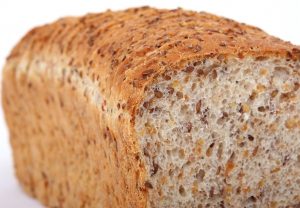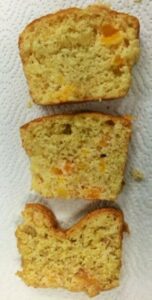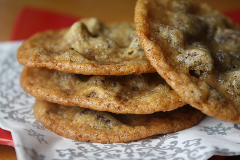Living in Colorado can provide a surprise when baking our favorite recipes that were developed for sea level. Many of our recipes tend to fail like when a chocolate chip cookie just spreads out over the cookie sheet or a cake fails to raise. At any elevation at 3,000 feet or above sea level, baked goods may require changes in time, temperature and/or ingredients due to lower atmospheric pressure. Air pressure decreases as elevation increases.
Baking Yeast Breads
 With yeast breads, decreased atmospheric pressure at higher elevations allows the dough to rise too fast, negatively impacting texture and flavor. To counteract this effect, use less yeast. You can also punch the dough and allow it to rise a second time. Also, you can allow the dough to rise in the refrigerator which slows down the process. Watch carefully to prevent over-rising. Allow dough to rise until just doubled in bulk, as over-proofing can result in a heavy, dry loaf or a misshapen or collapsed loaf.
With yeast breads, decreased atmospheric pressure at higher elevations allows the dough to rise too fast, negatively impacting texture and flavor. To counteract this effect, use less yeast. You can also punch the dough and allow it to rise a second time. Also, you can allow the dough to rise in the refrigerator which slows down the process. Watch carefully to prevent over-rising. Allow dough to rise until just doubled in bulk, as over-proofing can result in a heavy, dry loaf or a misshapen or collapsed loaf.
Flours tend to be drier and absorb more liquid in high, dry climates. Therefore, less flour or additional liquid may be needed to moisten the dough to the proper consistency.
Yeast breads benefit from flour with a higher protein content compared to other more tender baked products. For improved texture and volume, especially when baking at higher elevations, use flour with at least 12% protein. Bread flour or whole-wheat flour usually have higher protein content than other types of flour.
Quick Breads
 Quick breads vary from muffin-like to cake-like in cell structure. The structure of biscuits and muffin type quick breads is often firm enough to withstand the effects of reduced pressure at higher elevations. However, if recipe adjustments are not made, a bitter or alkaline flavor may result from inadequate neutralization of baking soda or baking powder. Slightly reducing these leaveners will usually improve results. Quick breads with a cake-like texture are more delicately balanced and can be improved at high elevations by following the adjustment recommendations given for cakes.
Quick breads vary from muffin-like to cake-like in cell structure. The structure of biscuits and muffin type quick breads is often firm enough to withstand the effects of reduced pressure at higher elevations. However, if recipe adjustments are not made, a bitter or alkaline flavor may result from inadequate neutralization of baking soda or baking powder. Slightly reducing these leaveners will usually improve results. Quick breads with a cake-like texture are more delicately balanced and can be improved at high elevations by following the adjustment recommendations given for cakes.
Cookies
Many cookie recipes contain a high volume of sugar and fat, which can cause cookies to sprawl on the baking sheet even at low elevations. Although many sea-level cookie recipes yield acceptable results at high elevation, they are often improved by one or more of these changes:
 A slight decrease in:
A slight decrease in:
- baking powder or soda
- fat and/or sugar
A slight increase in:
- liquid ingredients and flour
- baking temperature
Chilling cookie dough or using parchment paper on cookie sheets may help decrease spread during baking. Also putting cookie dough on room temperature baking sheets can help.
Want More Information?
Contact your local Colorado State University Extension Office for information on upcoming “High Elevation Baking Presentation” online training. This class will provide participants with free online planning tools. The “High Elevation Baking Presentation” class will be Wednesday, October 23rd starting at 7 pm MDT. Please click here to register for this class.


All good ideas, but what about gluten free baking at altitude?
Thank you for your comment. We do have an article about Gluten-Free Baking Basics. Here is the link https://livesmartcolorado.colostate.edu/gluten-free-baking-basics/.